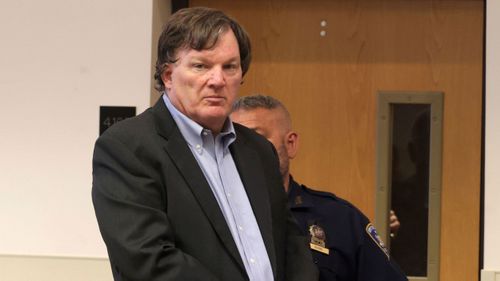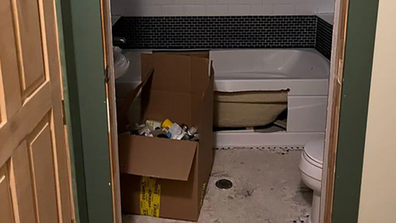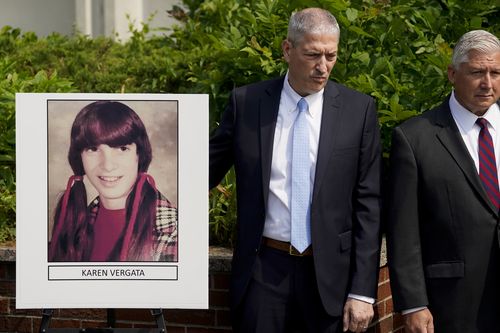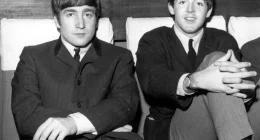
“His being an architect is totally consistent with the hyper attention to detail that is manifested in his murders,” criminologist and author Scott Bonn told CNN via email.
“I’ve never seen a written document such as this,” Suffolk County District Attorney Raymond Tierney told CNN.

The manual contained headings such as “Supplies” and “Problems,” with “DNA” listed as the top item under the latter. The DNA evidence – and “blueprint” document – will underpin the case against him at his eventual trial.
“The fact that he tried to get rid of these documents and that they were still found on the computer memory is really going to be – in connection with the DNA – a kind of nail in the coffin,” said Casey Jordan, a criminologist, behavioral analyst and attorney. “These two things combined are going to be very difficult for the defense to overcome.”
A section titled “body prep” detailed steps to clean, dismember and move bodies, while another called “post event” appeared to list tasks to avoid apprehension, including having a story set, according to the bail application.
Details of the content of the document come from the latest bail application from prosecutors. CNN has not seen the document independently for verification.
“The thing about his blueprint for murder that stood out to me immediately is his need to document his killings which demonstrates his grandiosity and desire to bask in the glory of his work,” said Bonn, author of Why we love serial killers: The curious appeal of the world’s most savage murderers.
“Heuermann’s egotistical documentation of his work definitely led to his undoing and also strengthened the case against him.”

Inside the accused Gilgo Beach serial killer’s home
‘Self-education and homework’ on killing
A big break in the case came in January 2023 when investigators took a swab from leftover pizza crust Heuermann discarded in the trash outside his Manhattan office, according to court documents. DNA evidence initially linked him to a hair found on the burlap sack where Waterman’s remains were found.
“I think the key evidence is DNA,” Tierney told CNN.

Forensic testing performed on strands of hair on or near both Taylor and Costilla’s remains found 99.96 per cent of the North American population could be excluded as the source of the hairs – but Heuermann could not.
The latest bail application said two forensic laboratories determined hairs recovered on five of the six victims were tied to Heuermann, members of his immediate family or people who lived with him.
“Defendant Heuermann is the individual who murdered, stripped, restrained, and transported the remains of Jessica Taylor and Sandra Costilla, as well as the Gilgo Four, until they were each discovered in 1993, 2003, 2010, and 2011,” according to a new bail application released Thursday.
The 60-year-old architect was surprised by the latest charges, Heuermann attorney Michael Brown said after the defendant appeared in an eastern Long Island courtroom. Heuermann was remanded without bail and is expected in court July 30.
“One murder is obviously horrific, and it’s a difficult thing to defend,” said Brown. “And now we’re at six.”
Brown told reporters Thursday he needed more time to review new evidence before commenting further.
In January, Brown told reporters his client claimed he is “not guilty of these charges” and looked forward to fighting the charges in court.
The “blueprint” document was discovered after investigators mined more than 350 electronic devices seized from Heuermann’s home, according to Tierney.
“It had been erased and we used forensic tools to recover it,” the district attorney said.
The bail application said the Gilgo Homicide Task Force “believe that the totality of circumstances surrounding the … Planning Document, including Heuermann’s attempt to delete its existence, points to it as Heuermann’s self-education and ‘homework’ on the topic of carrying out serial, sexual murder.”
Tierney added, “His intent was specifically to locate these victims, hunt them down to bring them under his control and to kill them … His intent was nothing short but to murder these victims.”
‘Thing to remember’ list of lessons learned
The “blueprint” document included a “pre-prep” section on steps to take before a killing, such as checking an area for surveillance cameras. A “prep” section appeared to outline what needed to be done closer to the time of the homicides, such as building a table with a “cross bar” underneath to support heavier objects, according to the bail application.
“This really kind of lays out for us how these women may have died,” Jordan said.
A “post event” section in the document listed ways to avoid detection by changing car tires and creating an alibi or story in case of an inquiry.
The document is riddled with typos and misspellings. It also had sections about sites for the disposal of physical evidence. There were notes on removing tattoos and other identifying marks. The bail application said a tattoo on Taylor’s torso had been mutilated with a sharp object.
A “things to remember” section appeared to show lessons learned from previous killings. It recommended the use of heavier rope since lighter types “broke under the stress of being tightend,” the bail application said.
Bonn noted similarities between the alleged Gilgo Beach killer and BTK, who was a churchgoer, Cub Scout leader and married father of two before advancements in science and technology ultimately led to his arrest in February 2005.
Tierney, the Suffolk County district attorney, said the investigation is far from over and Heuermann could be tied to other killings. “We’re going to continue. We’re not going to stop,” he said.
Said Jordan, the criminologist and behavioral analyst: “There could be more murders out there … We may never know the answer to that and they may never be charged.”








